
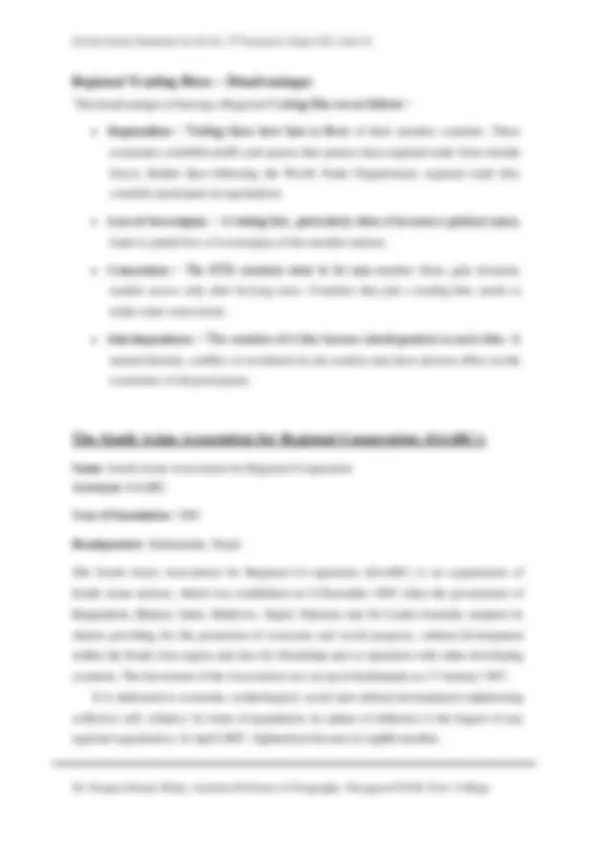
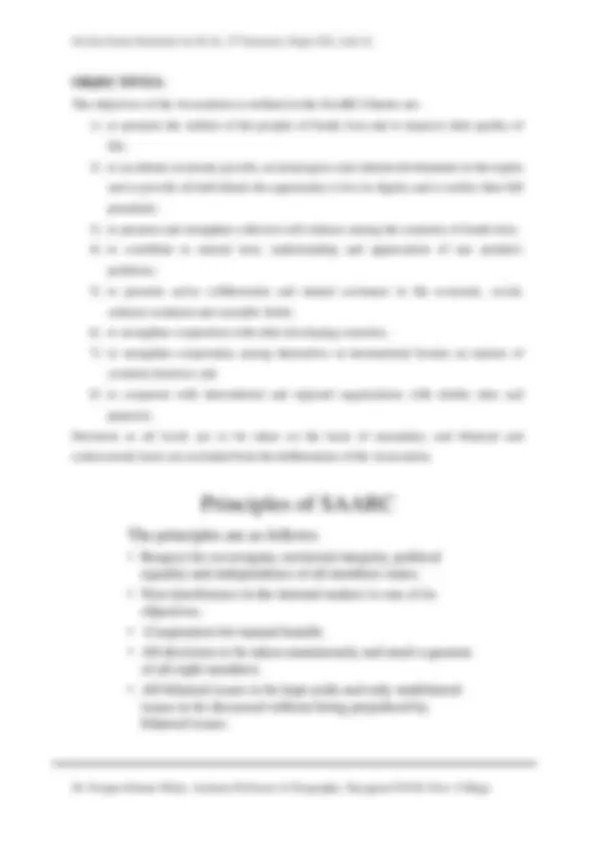
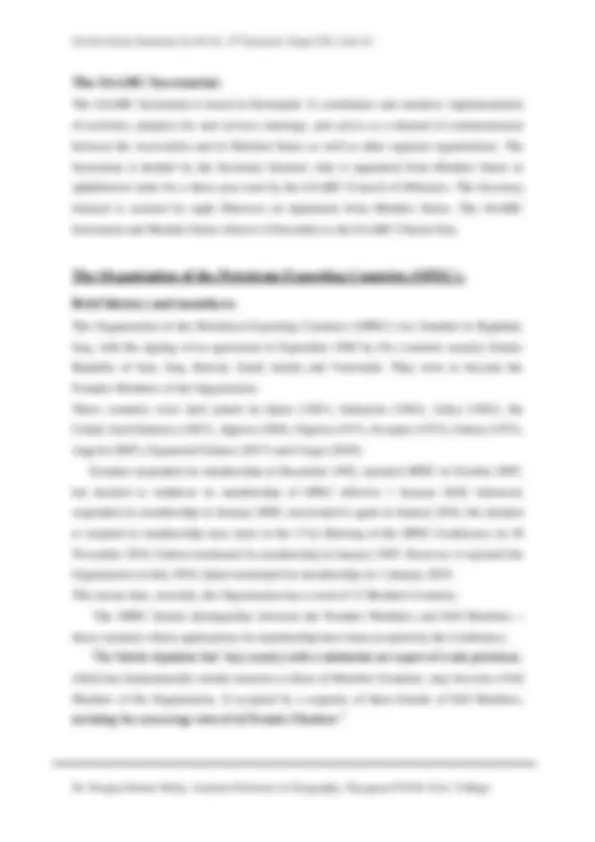
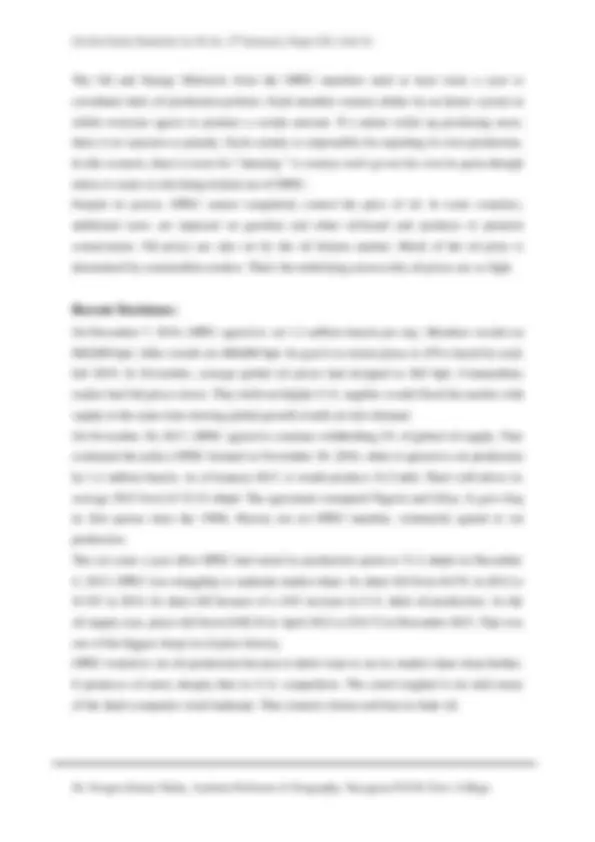
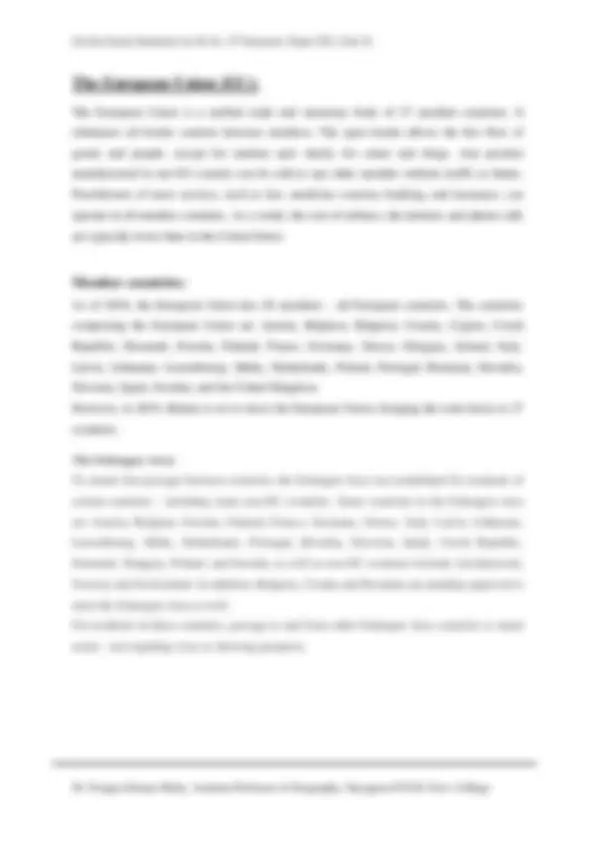
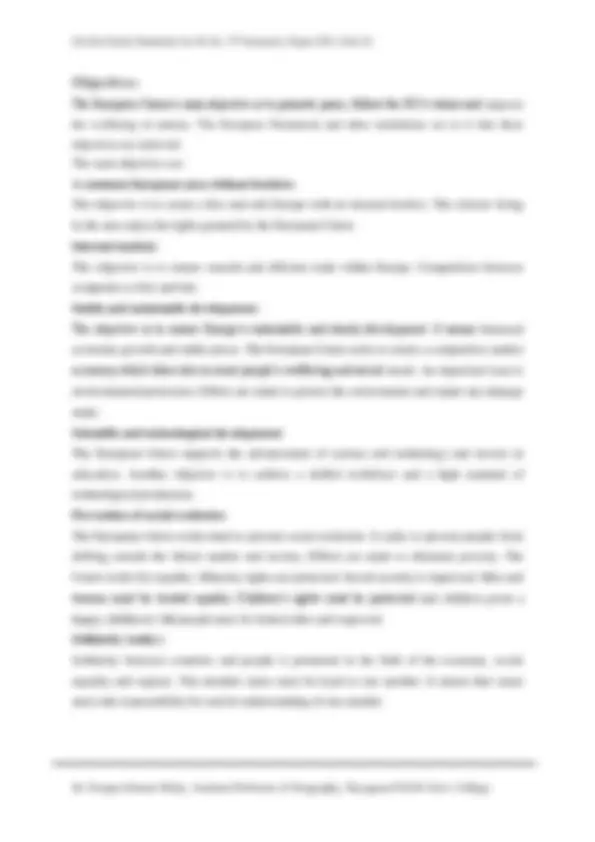


Study with the several resources on Docsity

Earn points by helping other students or get them with a premium plan


Prepare for your exams
Study with the several resources on Docsity

Earn points to download
Earn points by helping other students or get them with a premium plan
Community
Ask the community for help and clear up your study doubts
Discover the best universities in your country according to Docsity users
Free resources
Download our free guides on studying techniques, anxiety management strategies, and thesis advice from Docsity tutors
A regional trading block is a group of countries within a geographical region that protect themselves from imports from non-members.
Typology: Lecture notes
1 / 12

This page cannot be seen from the preview
Don't miss anything!







A regional trading block is a group of countries within a geographical region that protect themselves from imports from non-members. In general terms, regional trade blocks are associations of nations at a governmental level to promote trade within the block and defend its members against global competition. Defence against global competition is obtained through established tariffs on goods produced by member states, import quotas, government subsidies, onerous bureaucratic import processes, and technical and other non-tariff barriers. Since trade is not an isolated activity, member states within regional blocks also cooperate in economic, political, security, climatic, and other issues affecting the region. In terms of their size and trade value, there are four major trade blocks and a larger number of blocks of regional importance. Trading blocs are a special type of economic integration. There are four types of trading blocs − Preferential Trade Area − Preferential Trade Areas (PTAs), the first step towards making a full-fledged RTB, exist when countries of a particular geographical region agree to decrease or eliminate tariffs on selected goods and services imported from other members of the area. Free Trade Area − Free Trade Areas (FTAs) are like PTAs but in FTAs, the participating countries agree to remove or reduce barriers to trade on all goods coming from the participating members. Customs Union − A customs union has no tariff barriers between members, plus they agree to a common (unified) external tariff against non-members. Effectively, the members are allowed to negotiate as a single bloc with third parties, including other trading blocs, or with the WTO. Common Market − A ‘common market’ is an exclusive economic integration. The member countries trade freely all types of economic resources – not just tangible goods. All barriers to trade in goods, services, capital, and labor are removed in common markets. In addition to tariffs, non-tariff barriers are also diminished or removed in common markets.
The advantages of having a Regional Trading Bloc are as follows − Foreign Direct Investment − Foreign direct investment (FDI) surges in TRBs and it benefits the economies of participating nations. Economies of Scale − The larger markets created results in lower costs due to mass manufacturing of products locally. These markets form economies of scale. Competition − Trade blocs bring manufacturers from various economies, resulting in greater competition. The competition promotes efficiency within firms. Trade Effects − As tariffs are removed, the cost of imports goes down. Demand changes and consumers become the king. Market Efficiency − The increased consumption, the changes in demand, and a greater amount of products result in an efficient market.
The objectives of the Association as outlined in the SAARC Charter are:
The SAARC Secretariat is based in Katmandu. It coordinates and monitors implementation of activities, prepares for and services meetings, and serves as a channel of communication between the Association and its Member States as well as other regional organizations. The Secretariat is headed by the Secretary General, who is appointed from Member States in alphabetical order for a three-year term by the SAARC Council of Ministers. The Secretary General is assisted by eight Directors on deputation from Member States. The SAARC Secretariat and Member States observe 8 December as the SAARC Charter Day.
The Organization of the Petroleum Exporting Countries (OPEC) was founded in Baghdad, Iraq, with the signing of an agreement in September 1960 by five countries namely Islamic Republic of Iran, Iraq, Kuwait, Saudi Arabia and Venezuela. They were to become the Founder Members of the Organization. These countries were later joined by Qatar (1961), Indonesia (1962), Libya (1962), the United Arab Emirates (1967), Algeria (1969), Nigeria (1971), Ecuador (1973), Gabon (1975), Angola (2007), Equatorial Guinea (2017) and Congo (2018). Ecuador suspended its membership in December 1992, rejoined OPEC in October 2007, but decided to withdraw its membership of OPEC effective 1 January 2020. Indonesia suspended its membership in January 2009, reactivated it again in January 2016, but decided to suspend its membership once more at the 171st Meeting of the OPEC Conference on 30 November 2016. Gabon terminated its membership in January 1995. However, it rejoined the Organization in July 2016. Qatar terminated its membership on 1 January 2019. This means that, currently, the Organization has a total of 13 Member Countries. The OPEC Statute distinguishes between the Founder Members and Full Members – those countries whose applications for membership have been accepted by the Conference. The Statute stipulates that “any country with a substantial net export of crude petroleum, which has fundamentally similar interests to those of Member Countries, may become a Full Member of the Organization, if accepted by a majority of three-fourths of Full Members, including the concurring votes of all Founder Members.”
But Iran wants a lower target for prices of $60 a barrel. It believes a lower price will drive out U.S. shale oil producers who need a higher margin. Iran's break-even price is just over $50 a barrel. Saudi Arabia needs $70 a barrel to break even. That price includes exploration and administrative costs. Saudi Arabia's flagship oil company, Aramco, can pump the oil at $2 to $20 a barrel. Saudi Arabia has cash reserves to allow it to operate at lower prices. But it is a hardship the country prefers to avoid. Like other OPEC members, it relies on petrodollars for government revenues. Without OPEC, individual oil-exporting countries would pump as much as possible to maximize national revenue. By competing with each other, they would drive prices even lower. That would stimulate even more global demand. OPEC countries would run out of their most precious resource that much faster. Instead, OPEC members agree to produce only enough to keep the price high for all members. to explore its shale oil fields. U.S. companies used fracking to open up the Bakken oil fields for production. As a result, non-OPEC supply increased.
The Oil and Energy Ministers from the OPEC members meet at least twice a year to coordinate their oil production policies. Each member country abides by an honor system in which everyone agrees to produce a certain amount. If a nation winds up producing more, there is no sanction or penalty. Each country is responsible for reporting its own production. In this scenario, there is room for "cheating." A country won't go too far over its quota though unless it wants to risk being kicked out of OPEC. Despite its power, OPEC cannot completely control the price of oil. In some countries, additional taxes are imposed on gasoline and other oil-based end products to promote conservation. Oil prices are also set by the oil futures market. Much of the oil price is determined by commodities traders. That's the underlying reason why oil prices are so high.
On December 7, 2018, OPEC agreed to cut 1.2 million barrels per day. Members would cut 800,000 bpd. Allies would cut 400,000 bpd. Its goal is to return prices to $70 a barrel by early fall 2019. In November, average global oil prices had dropped to $65 bpd. Commodities traders had bid prices down. They believed higher U.S. supplies would flood the market with supply at the same time slowing global growth would cut into demand. On November 30, 2017, OPEC agreed to continue withholding 2% of global oil supply. That continued the policy OPEC formed on November 30, 2016, when it agreed to cut production by 1.2 million barrels. As of January 2017, it would produce 32.5 mbd. That's still above its average 2015 level of 32.32 mbpd. The agreement exempted Nigeria and Libya. It gave Iraq its first quotas since the 199 0s. Russia, not an OPEC member, voluntarily agreed to cut production. The cut came a year after OPEC had raised its production quota to 31.5 mbpd on December 4, 2015. OPEC was struggling to maintain market share. Its share fell from 44.5% in 2012 to 41.8% in 2014. Its share fell because of a 16% increase in U.S. shale oil production. As the oil supply rose, prices fell from $108.54 in April 2012 to $34.72 in December 2015. That was one of the biggest drops in oil price history. OPEC waited to cut oil production because it didn't want to see its market share drop further. It produces oil more cheaply than its U.S. competition. The cartel toughed it out until many of the shale companies went bankrupt. That created a boom and bust in shale oil.
The European Union’s main objective is to promote peace, follow the EU’s values and improve the wellbeing of nations. The European Parliament and other institutions see to it that these objectives are achieved. The main objectives are: A common European area without borders: The objective is to create a free and safe Europe with no internal borders. The citizens living in the area enjoy the rights granted by the European Union. Internal market: The objective is to ensure smooth and efficient trade within Europe. Competition between companies is free and fair. Stable and sustainable development: The objective is to ensure Europe’s sustainable and steady development. It means balanced economic growth and stable prices. The European Union seeks to create a competitive market economy which takes into account people’s wellbeing and social needs. An important issue is environmental protection. Efforts are made to protect the environment and repair any damage made. Scientific and technological development: The European Union supports the advancement of science and technology and invests in education. Another objective is to achieve a skilled workforce and a high standard of technological production. Prevention of social exclusion: The European Union works hard to prevent social exclusion. It seeks to prevent people from drifting outside the labour market and society. Efforts are made to eliminate poverty. The Union works for equality. Minority rights are protected. Social security is improved. Men and women must be treated equally. Children’s rights must be protected and children given a happy childhood. Old people must be looked after and respected. Solidarity (unity): Solidarity between countries and people is promoted in the field of the economy, social equality and regions. The member states must be loyal to one another. It means that states must take responsibility for and be understanding of one another.
Respect for languages and cultures: The European Union respects the languages and cultures of the individual countries. National cultures and the common European culture are cherished and developed. Common foreign and security policy: The European Union seeks to promote peace not only in Europe but also elsewhere in the world. It seeks to ensure that peace is maintained in Europe and that people have security. With the common foreign policy, the European Union wants to make sure that the resources of the planet are used sensibly and that the environment is not destroyed. The European Union also wishes to respect other countries and nations. It works for free and fair trade and tries to eliminate poverty. Human rights are important all over the world. The European Union follows the Charter of the United Nations and underlines the importance of common international rules.
In 1950, the concept of a European trade area was first established. The European Coal and Steel Community had six founding members: Belgium, France, Germany, Italy, Luxembourg, and the Netherlands. In 1957, the Treaty of Rome established a common market. It eliminated customs duties in